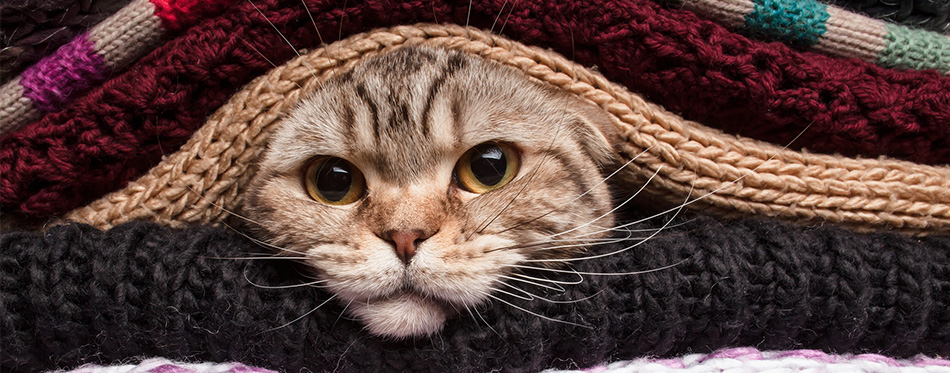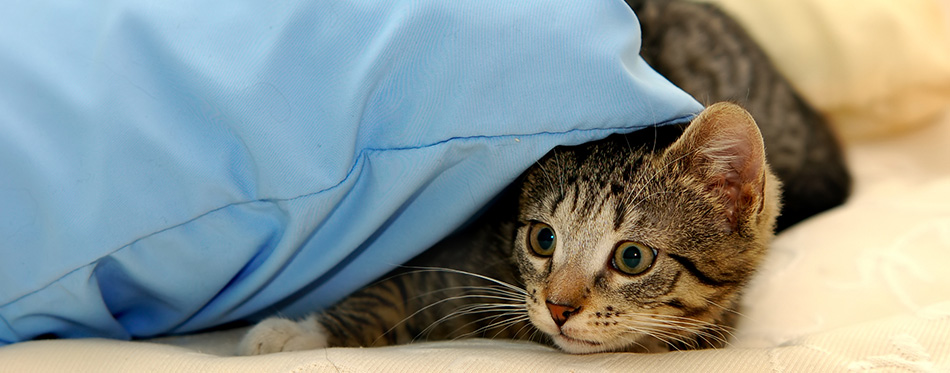Just like most creatures in the animal kingdom, cats hate it when it gets too chilly. They’d rather have somewhere cozy and warm to stay in. This is why you’ll find your cats taking naps next to windows with open curtains, fireplaces, or even running electronics. You’re going to want to find other ways to keep your cat warm, as some of the places they stay in to get a bit of heat may actually pose potential hazards for their health and wellbeing. That’s why we’re going to teach you how to keep your cat warm even during the colder seasons.
Warning Signs of Coldness
First and foremost, you may be wondering, “How do I know if my cat is cold?” Well, worry no longer. The first thing your cat will try to do if it feels cold is go to the nearest heat source. This could be those that we’ve mentioned in the beginning part of this article or somewhere else like on your lap or inside your clothes. They may also position themselves with their paws tucked in close to their body once they get to a warm place. This is so they can retain as much of the body heat they have left as possible to not feel any colder than they do.
Obviously, a cat that’s cold is going to shiver – an obvious visual sign of being cold. Sneezing and nasal discharge may also accompany this symptom. In some more extreme cases, cats won’t eat or drink on schedule if they’re feeling cold. Keep an eye out for any of these warning sings. If you spot even just one of them, wrap your cat in a warm blanket and take it to the veterinarian as soon as you can.

Let Your Cat Stay Inside
Now that you know how tell if your cat is cold, let’s talk about how you could keep your cat from feeling that way. Obviously you shouldn’t let your cat outside when it’s cold. Deicing products and antifreeze may be harmful to your pet. Out of control cars may also be a hazard. What you should do instead is to let your pet feline inside and place it near the nearest safe heat source – no placing your cat near open flames or things that may burn its paws. Don’t put clothes on your cats since these may get stuck and cause further injury.
Turn Up the Temperature
Now that you’ve let your cat inside, you can crank up the temperature. If your cat feels that the weather is a bit chilly, chances are high that you do too, so it won’t be uncomfortable for either of you to raise the temperature even just by a tiny bit. Now, how cold is too cold for cats inside? Most cat experts and veterinarians agree that a temperature between 70º and 80º F is the best for felines. If you can afford it, have a room for your cat with a separate temperature. This is ideal if you like your house cooler than 70º F or warmer than 80º F.
Let Them Sleep on a Cat Bed
The next way you can keep your cat warm during the colder seasons is by providing them with their very own cat bed. These beds are specially made with felines in mind. They’re also made using a special material that helps the cat using it keep more of its natural body heat for longer. Blankets could also be a good idea. Just make sure to remove them if your cat starts roaming around again, as these may get stuck somewhere you don’t want them to like we’ve said before. If you can’t afford a cat bed, try lining an empty box with thick towels.
If you have a bit more resources to play around with, try getting your cat a heated cat bed. Not only are these beds inherently warm thanks to the material they’re made of, their temperature can also be raised to provide some additional coziness. Heated cat beds also come in many different shapes and sizes, so try to find one that resembles whatever it is that your cat is sleeping on at the moment. This will help lessen the hassle of helping them get accustomed to their new sleeping arrangements. No one needs to go through all that trouble.
Let Your Cat Break a Sweat
Another thing you can do is exercise with your cat. You heard us right. Work up a sweat with your cat if it’s feeling a bit cold. You don’t necessarily have to get in on the physical activity in this situation, but chances are you’d be a lot fitter and happier if you did. Otherwise, you can exercise your four-legged friend by getting them a remote controlled toy or building them their very own obstacle course. The tried and tested laser pointer works like a charm as well to get your cat moving and warming itself up a little bit. If you are looking for more options, check out our guide on interactive cat toys.

Monitor Your Cat’s Caloric Intake
Remember to monitor how much food your cat eats as well as how much water it drinks. This tip also applies for outdoor cats, so do this if you’re wondering about how to keep a cat warm outside. One of the best ways to do this is by setting up a feeding station with food and drinks. Put up your feeding station in an area where not a lot of people go buy to avoid startling your cat as it eats. Don’t put it too close to their shelter either if you have multiple cats. This may cause the cats to compete with one another to get the most food or water. Check out our guide on the best automatic cat feeders for more info.
Check in on your feeding station from time to time to see if you’re putting too much food or maybe even too little. Clean and maintain it often as well to prevent sicknesses caused by leftover food residue. Change the water every day, too so the bowls don’t become breeding grounds for disease-carrying mosquitos. This is also a good idea since your cat may get sick from drinking water that’s not fresh. You may also like our articles on the best cat water fountains and best water bowls for cats.
That’s how you keep your cat as warm as possible even if it’s extremely cold outside. Don’t forget that you’ll get the best results if you use a combination of most, if not all, of these tips instead of just one or two of them.

